Every year at this time, we in the Northern Hemisphere see a grand parade of moonlit nights with the full Harvest Moon, the full moon closest to the autumn equinox. But the nights around this year's Harvest Moon will be somewhat less grand than usual due to what is called a minor lunar standstill. It's all about the inclination of the moon's orbit to the plane of the Earth's equator which determines where on the horizon we see the moonrise.
Inclination of moon's orbit to Earth's equator. Unlike Earth's moon, many moons in the solar system orbit above the equator of their respective planets. If our moon did likewise - orbited around the Earth's equator - then the moon would always rise due east and set due west every day. Our moon's orbit is inclined to the plane of Earth's equator, however. Our moon orbits Earth on nearly the same plane that Earth orbits the sun (aka the plane of the ecliptic).
That's why, as it rises and sets each day, Earth's moon spends about two weeks rising and setting south of due east and west, and then two weeks rising and setting north of due east and west.
This inclination of the moon's orbit also creates the grand parade of moonlit nights - the Harvest Moon phenomenon - we mentioned earlier. In 2015, the full Harvest Moon comes on the night of September 27-28, staging a supermoon total lunar eclipse visible from North America to boot.
For several nights around the Harvest Moon itself - and the eclipse - there will be bright moons ascending in the east, around the time of dusk, for several nights in a row, at high latitudes in the Northern Hemisphere. That is the phenomenon of the Harvest Moons. It's as though, in the month of the Harvest Moon, we have a full moon for several nights in a row.
But this year that effect is diminished, because this year the moon swings minimally south and then minimally north of the celestial equator in its 18.6-year standstill cycle during the fortnight period from from September 21, 2015, to October 3, 2015. When the moon reaches its southern standstill - farthest south - on September 21, 2015, it'll only be 18.134o south of the equator. One fortnight later, when the moon swings to its northern standstill - farthest north - it'll only be 18.140o north of the equator on October 3, 2015.
Midway between these standstills, the Northern Hemisphere has its full Harvest Moon on September 27 or 28, 2015. The moon is going eastward in its orbit - as well as northward. Each day, the moon rises farther north along the eastern horizon and that's what is responsible for the full Harvest Moon phenomenon in the Northern Hemisphere. When the moon rises farther north of where it did the day before, the moon also rises considerably sooner than the average 50 minutes later daily. The table below helps to illustrate for Fairbanks, Alaska. The azimuth reads 90o when the moon is rising due east, more than 90o when rising south of due east and less than 90o when rising north of due east.
Fairbanks, Alaska (65o north latitude)
2015 Full Harvest Moon: September 27
Source: TimeandDate.com
To recap: The September 2015 full Harvest Moon occurs when the moon's orbital inclination to the equator reaches an absolute minimum in the moon's 18.6-year standstill cycle. The shallower inclination of the moon's orbital plane, relative to the plane of the Earth's equator, reduces the impact of the Harvest Moon in 2015. See 18.6-year lunar cycle impacts Harvest Moon for a fuller explanation.
Every full moon rises around sunset, and sets around sunrise, providing moonlight all night long. On the average, the moon rises about 50 minutes later each night after the full moon - though the lag time between moonrises, in any year, is reduced to a yearly minimum around the time of the full Harvest Moon. This is because the moon rises farther north along the eastern horizon each day for days on end after the Northern Hemisphere's full Harvest Moon, causing the moon to rise earlier than usual and to provide several nights of dusk-till-dawn moonlight.
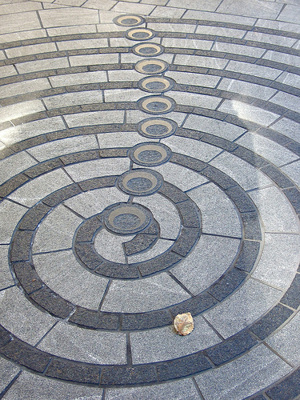
18.6-year lunar cycle impacts Harvest Moon. The inclination of the moon's orbital path to the plane of the Earth's equator changes over a cycle of 18.6 years. For instance, in the year 2006 - and again in the year 2025 - the moon in its monthly travels swings from about 28.5o south to 28.5o north of the Earth's equator. Sometimes this extreme inclination is called a major lunar standstill. The greater inclination of the moon's orbit accentuates the effect of the Harvest Moon.
Throughout the year 2015, in contrast, the moon's monthly travels takes the moon from roughly 18.5o south to 18.5o north of the Earth's equator. This minimal inclination of the moon's orbit is sometimes called a minor lunar standstill. A minor lunar standstill acts to lessen the effect of the Harvest Moon.
So we're now in a minor lunar standstill year in 2015. Therefore, the diminished inclination of the moon's orbit to the equator lessens the impact of this year's Harvest Moon. In fact, the next major lunar standstill year won't be forthcoming until 2025. (See table at the bottom of this post.)
The plane of the moon's orbit is inclined at 5o to the ecliptic (plane of the Earth's orbit). In a year when the moon's orbit intersects the ecliptic at the March equinox point, going from north to south, we have a minor lunar standstill year. Thereby, the lunar standstill points are 5o closer to the equator than are the solstice points (23.5o - 5o = 18.5o declination).
What is a Harvest Moon? The full moon occurring most closely to the autumnal equinox (the Northern Hemisphere's September equinox/Southern Hemisphere's March equinox) enjoys the designation of Harvest Moon. The full Harvest Moon will come on September 28, 2015, in the Northern Hemisphere - and to the Southern Hemisphere on March 23, 2016.
There is no Harvest Moon at the equator and not enough of one to say so in the tropical regions of the globe. You really have to be well north (or south) of the tropics to observe the year's grandest parade of moonlit nights around the time of the autumn equinox. The farther north or south of the Earth's equator that you live, the longer the procession of moonlit nights accompanying the harvest season.
The term Harvest Moon might be of European origin, because northern Europe is much closer to the Arctic than to the tropics. Before the advent of artificial lighting, people planned nocturnal activity around the moon, knowing the moon provides dusk-till-dawn moonlight on the night of the full moon. But farmers of old were also aware that the Harvest Moon - the closest full moon to the autumn equinox - could be relied upon to provide dusk-till-dawn moonlit for several days in a row at mid-temperate latitudes, or even as long as a week straight at far-northern latitudes.
This bonanza of moonlight in the season of waning daylight remains the legacy of the Harvest Moon.
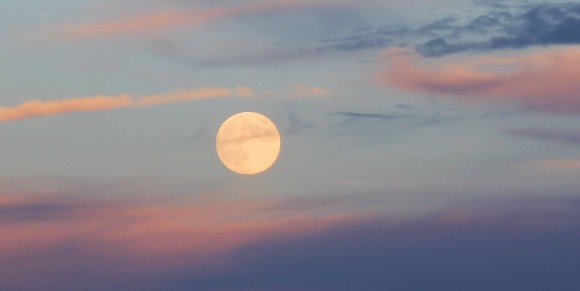
Amy Simpson-Wynne in Virginia posted this beautiful twilight photo to EarthSky Facebook of the Harvest Moon of 2013. A Harvest Moon is characterized by rising near the time of sunset for several evenings in a row, but, in 2015, that effect is diminished.
Some peculiarities of the Harvest Moonrise In the Northern Hemisphere, the moon rises farther north along the horizon each evening for a number of days following the appearance of the full Harvest Moon. This northward movement along the horizon reduces the lag time between successive moonrises, so the moon rises at or near the time of sunset for several days in succession.
In the Southern Hemisphere, by the way, the full Harvest Moon will occur in March 2016, as the moon is moving maximally southward from night to night.
In fact, it's even possible - in or near a major standstill year - for the moon to rise at an earlier time than on the previous day at high northern (or southern) latitudes. For a prime example, see the chart below for Anchorage, Alaska, noting the moonrise times in October 2025, a major lunar standstill year.
Also, note the moonrise times for September 2015 in Anchorage, Alaska, during the year of the minor lunar standstill. Obviously, the minor lunar standstill lessens the impact of the Harvest Moon.
Seattle, Washington (48o north latitude)
2015 Full Harvest Moon: September 27 * 2025 Full Harvest Moon: October 6
Source: Sunrise Sunset Calendar
Bottom line: The diminished inclination of the moon's orbit to Earth's equator shortens the procession of moonlit nights accompanying this year's Harvest Moon.
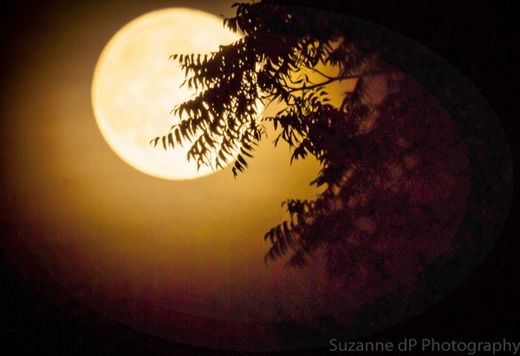
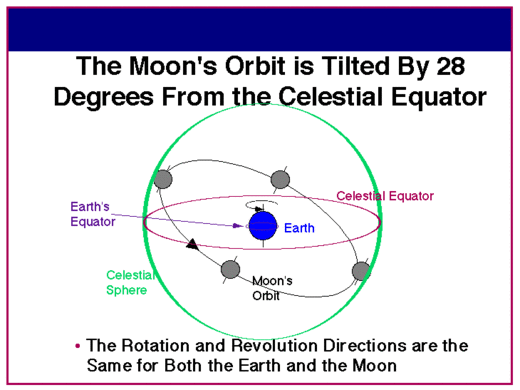

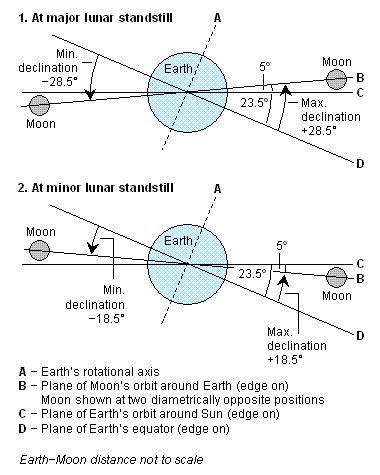
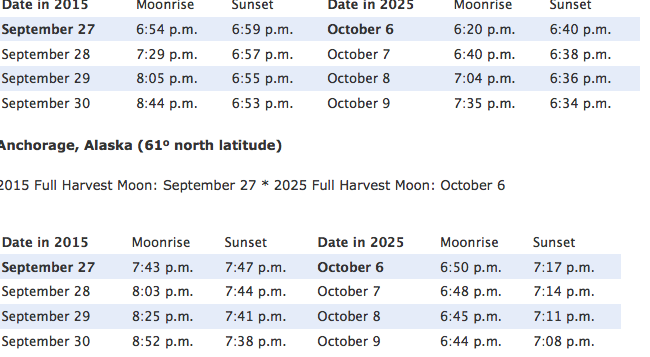
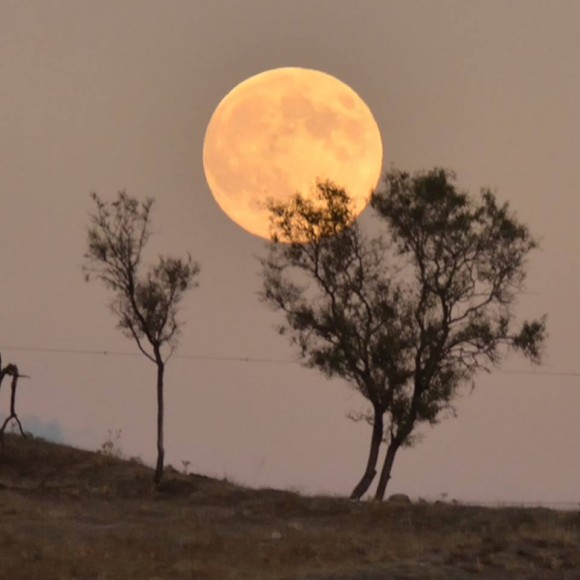



Comment: Epic night sky event: Rare supermoon lunar eclipse
Follow the links below to learn more:
Inclination of moon's orbit to Earth's equator
18.6-year lunar cycle impacts Harvest Moon
What is a Harvest Moon?
Some peculiarities of the Harvest Moonrise
Everything you need to know: Harvest Moon 2015